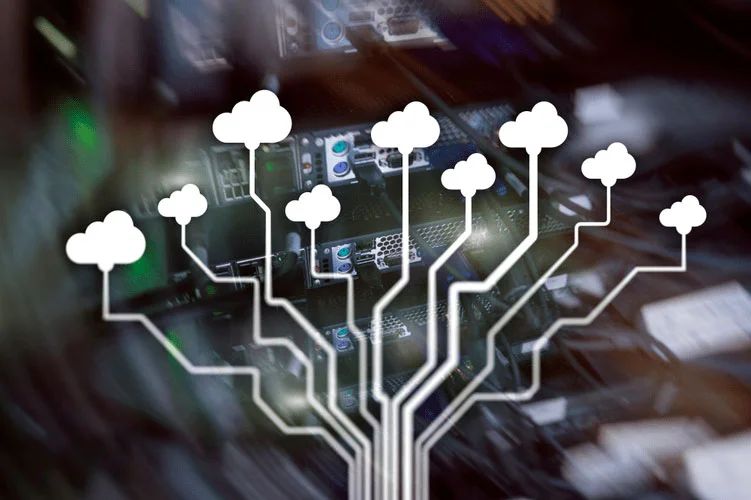This keeps everybody utilizing the same toolset throughout the complete improvement lifecycle. Popular SDLC fashions embody the waterfall mannequin, spiral mannequin, and Agile mannequin. DevOps follows the lean and agile SDLC methodologies and emphasizes collaboration. Throughout the whole SDLC, developers, IT operations staff, and safety groups often communicate and work together to make sure successful project delivery. To help them work most successfully, growth groups would possibly adopt features of both the scrum and kanban agile frameworks.

Development teams ought to talk that in this stage, quite than wasting time at a later stage trying to implement a characteristic they finally abandon. Modern approaches to software development involve a definite set of processes. Understanding these processes is a important first step in getting began with software improvement.
The analysis stage of the SDLC is the place improvement teams translate high-level plans and targets into actionable ideas. To do this, groups perform a technical analysis of the plans they developed in the previous stage and determine how greatest to implement them. This stage includes deploying the developed system into the production surroundings. This includes activities corresponding to system set up, data migration, training end-users, and configuring essential infrastructure. Implementation requires cautious planning and coordination to reduce disruptions and guarantee a smooth transition from the old system to the new one. The Development stage entails the actual coding and programming of the system.
Section #4: Software Program Improvement
Line-by-line element about tips on how to implement code isn’t necessary, however groups ought to know precisely which tools and processes they’ll use as they build the app. Once improvement teams have a transparent understanding of what the application’s purpose is and which features are wanted to serve that function, the planning stage is full. Following every phase of a system improvement life cycle the group and project manager could set up a baseline or milestones in the process.
- After testing, the general design for the software program will come together.
- You’ll learn about its core that means and phases, major software engineering methodologies, and an important advantages it could present throughout project growth.
- One particularly highly effective and in style framework is called the Software Development Life Cycle process (SDLC).
- For example, the waterfall mannequin works greatest for projects where your team has no or limited entry to prospects to provide fixed suggestions.
As a outcome, all stakeholders agree on software growth goals and necessities upfront and additionally have a plan to achieve these goals. Software development lifecycle (SDLC) models are workflow processes that growth groups observe to plan, analyze, design, test, deploy, and maintain software program. Examples of SDLC models embrace the waterfall model, the iterative mannequin, the spiral mannequin, and the v-shaped model. Another kind of SDLC model is the agile methodology, which emphasizes incremental supply, staff collaboration, and continual planning and learning. The waterfall model provides discipline to project administration and provides a tangible output at the finish of every part.
Security That Empowers Developers
To test effectively at scale, nonetheless, groups ought to automate as many tests as possible utilizing take a look at automation frameworks, such as Selenium and Cucumber. The design section is complete when teams have a clear understanding of how users work together with the app. The purpose of this stage is to develop a fundamental plan about what an software must do based on business necessities. Verification and validation methodology requires a rigorous timeline and enormous quantities of resources. It is just like the Waterfall mannequin with the addition of complete parallel testing through the early stages of the SDLC process. Each of them requires completely different specialists and diverse skills for successful project completion.
The doc units expectations and defines frequent objectives that assist in project planning. The group estimates prices, creates a schedule, and has a detailed plan to attain their targets. The product manager/end user on this section is liable for evaluating the system software, which is the output of the earlier phases. The analysis is finished before the project proceeds to the subsequent planned spiral cycle. This section is meant to determine any potential risk by planning the risk mitigation strategy.

This phase concentrates on speaking with the users/end users to assemble the necessities and to seize data concerning a user’s wants. The product manager, at this stage, defines and paperwork the scope of the project in a doc referred to as a business case. The SDLC was initially introduced in a book known as Global Business Information by Feoffrey Elliott. Several pitfalls can turn an SDLC implementation into extra of a roadblock to improvement than a software that helps us. Failure to keep in mind the needs of shoppers and all users and stakeholders can lead to a poor understanding of the system requirements at the outset. DevSecOps, an extension of DevOps, is a technique that emphasizes the combination of safety assessments throughout the complete SDLC.
Examples Of Traditional Sdlc Models
Once the planning is done, it’s time to switch to the analysis and evaluation stage. It acts as the inspiration of the entire SDLC scheme and paves the way in which for the profitable execution of upcoming steps and, ultimately, a profitable project launch. All three of these methods are in style since they allow for extensive iteration and bug testing earlier than a product is built-in with larger supply code or delivered to the market. Again, since SDLCs utilize in depth paperwork and guideline documents, it’s a team effort, and losing one even a serious member will not jeopardize the project timeline.
SDLC and SAD are cornerstones of full life cycle product and system planning. In the previous, the most popular improvement model was the Waterfall model, which entailed pushing out adjustments to functions in large, infrequent iterations. Today, Waterfall has largely given way to Agile software program development, which inspires teams to break application updates into small chunks of work and handle them using quick sprints.

SDLC methodologies fit within a flexibility spectrum ranging from agile to iterative to sequential. Sequential or big-design-up-front (BDUF) models, corresponding to waterfall, give attention to full and proper planning to guide larger initiatives and restrict dangers to successful and predictable outcomes. [6] Anamorphic development is guided by project scope and adaptive iterations.
Which Sdlc Model Is One Of The Best And Mostly Used?
Conduct with a preliminary evaluation, consider various solutions, estimate prices and advantages, and submit a preliminary plan with suggestions. When teams have clarity into the work getting done, there’s no telling how much more they can accomplish in the identical amount of time. While it is normally too expensive for the supply of enormous projects, this SDLC methodology perfectly works for small or experimental initiatives. It enables common incorporation of suggestions, which significantly reduces the time and prices required to implement changes.
It goes on indefinitely until people stop using the application or till a brand new model of the app replaces the old one — during which case, groups transition to maintaining the newer version of the app. Once the application has successfully handed all checks, the testing section is full. They do not lay out exactly tips on how to implement sure features or performance or which programming languages are involved. Having covered the most important SDLC methodologies supplied by software improvement corporations, let’s now evaluation whether or not they are truly value using. As you probably can see, completely different methodologies are used relying on the particular vision, characteristics, and requirements of individual initiatives. Knowing the construction and nuances of each mannequin might help to choose the one that most carefully fits your project.
What Does Sdlc Develop?
SDLC consists of six steps which I even have diagrammed right here on your reference. One reply is to leverage a framework to information your behavior and work-flows. The final part of the SDLC is to measure the effectiveness of the system and consider potential enhancements. However, the overall consensus is that there are seven fundamental levels in the SDLC. Empower your folks to go above and beyond phases of the system development life cycle with a flexible platform designed to match the needs of your group — and adapt as these needs change. Mostly used for creating and delivering a variety of ideas, this model completely suits the shoppers who don’t have a transparent concept or imaginative and prescient of what their last product ought to look like.

LogRocket simplifies workflows by permitting Engineering, Product, UX, and Design groups to work from the identical data as you, eliminating any confusion about what must be accomplished. After efficiently constructing the software, the group coordinates with the product supervisor to deploy the software program to production. The team members are assigned and the activities wanted to construct the software program are outlined (e.g., gather requirements, interview clients, conduct smoke exams, and so on.).
The Big Bang mannequin is incredibly versatile and doesn’t follow a rigorous course of or procedure. It’s largely used to develop broad concepts when the client or client isn’t sure what they want. Projects pass through 4 major phases many times in a metaphorically spiral motion. After testing, the general design for the software will come together. Different modules or designs might be built-in into the primary supply code via developer efforts, usually by leveraging training environments to detect additional errors or defects. During the testing stage, developers will go over their software program with a fine-tooth comb, noting any bugs or defects that must be tracked, fixed, and later retested.
Other SDLC models include speedy software development (RAD), joint utility growth (JAD), the fountain mannequin, the spiral model, build and fix, and synchronize-and-stabilize. The planning phase sometimes contains tasks like cost-benefit analysis, scheduling, resource estimation, and allocation. The growth group https://www.globalcloudteam.com/ collects necessities from several stakeholders such as prospects, inner and exterior consultants, and managers to create a software program requirement specification doc. The software growth lifecycle (SDLC) outlines several duties required to build a software program software.